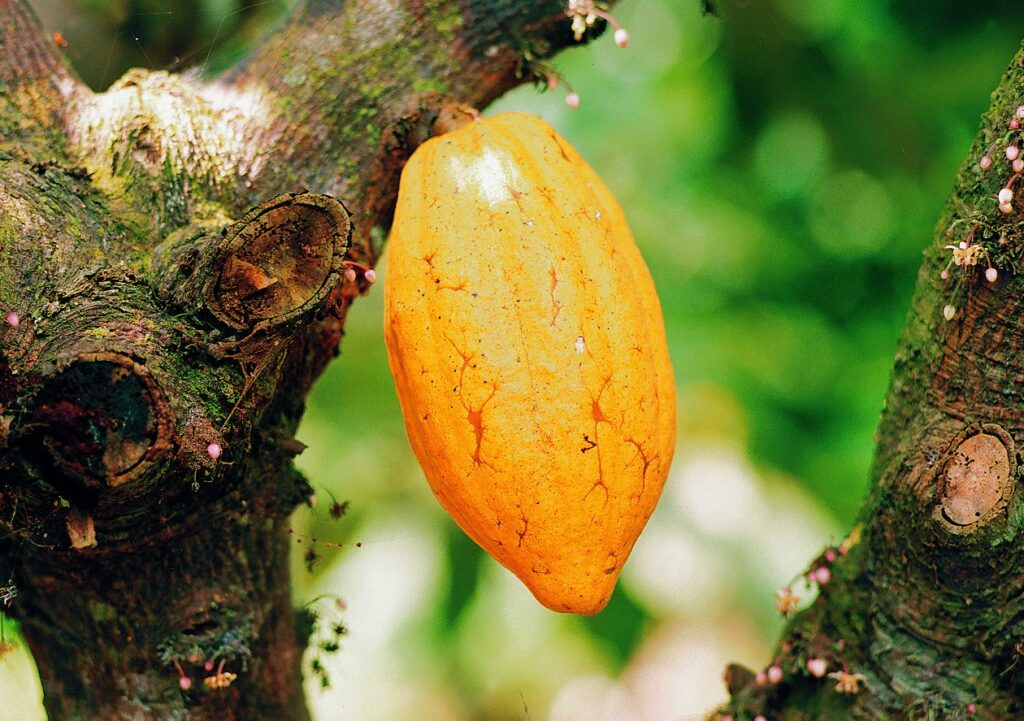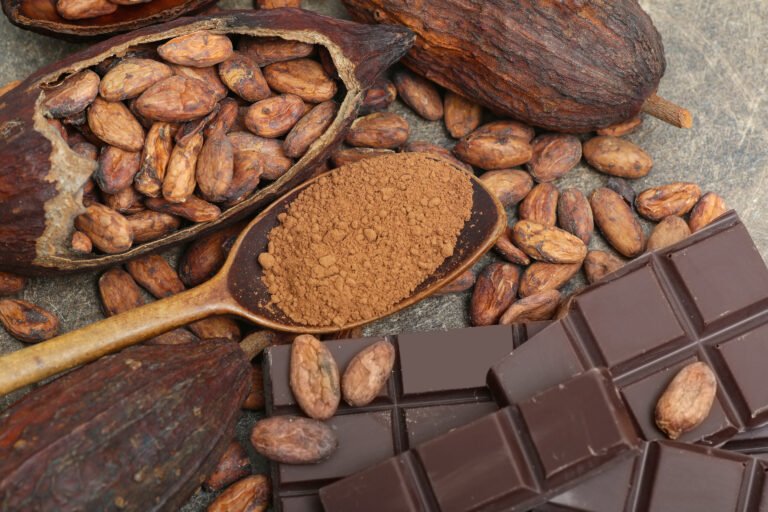ParagraphMore Styles
Chocolate is one of the most beloved treats in the world of cacao, with a rich history that dates back to the ancient Mayan and Aztec civilizations. But many people don’t know that chocolate’s taste and texture are heavily influenced by the genetic makeup of the cacao beans used to make it. In this article, we’ll dive into the science of cacao genetics and explore how different cacao varieties impact the flavor and texture of chocolate products.
What is Cacao?
Cacao, also known as cocoa, is a tropical tree native to Central and South America. It produces pods that contain seeds, which are the source of cocoa butter and cocoa solids used to make chocolate. The seeds are often called cacao beans and come in various shapes and colors.
The Genetic Diversity of Cacao
There are three main types of cacao: Criollo, Forastero, and Trinitario. Criollo is the rarest and most highly prized type, known for its delicate flavor and aroma. Forastero is the most common type typically used in mass-produced chocolate products. Trinitario is a hybrid of Criollo and Forastero, known for its balance of flavor and disease resistance.
Within these three types, there are hundreds of different cacao varieties. Each variety has a unique genetic makeup that impacts the flavor, aroma, and texture of the chocolate it produces.

The Influence of Genetics on Chocolate Flavor
The flavor of chocolate is influenced by a complex interaction of factors, including the type of cacao used, the environment in which it was grown, and the processing techniques used to turn the cacao beans into chocolate. However, genetics play a critical role in determining the flavor profile of a particular variety of cacao.
Some cacao varieties, such as Nacional from Ecuador, are known for their floral and fruity flavors. In contrast, others, such as the Amelonado variety from West Africa, have a nutty, earthy taste. The genetics of each type determines the balance of bitter, sweet, and sour flavors, as well as the intensity of the aroma and the mouthfeel of the chocolate.
How Genetics Impact Chocolate Texture
In addition to flavor, genetics also play a role in determining the texture of chocolate. The fatty acid composition of cacao beans, determined by genetics, affects the melting point and viscosity of the cocoa butter used in chocolate production. This, in turn, influences the mouthfeel and texture of the finished chocolate product.
Cacao varieties with a higher proportion of specific fatty acids, such as oleic acid, produce chocolate with a smoother texture and lower melting point. In contrast, cacao varieties with a higher proportion of palmitic acid have chocolate with a more brittle texture and melting point.

The Future of Cacao Genetics
As the global demand for chocolate grows, the study of cacao genetics is becoming increasingly important. By understanding the genetic makeup of different cacao varieties, scientists and farmers can work to develop new types that are more disease-resistant, have better flavor profiles, and are more resilient to environmental changes.
With the help of advanced genetic techniques such as genome sequencing and gene editing, it may be possible to create new cacao varieties with even more complex and nuanced flavor profiles and improved disease resistance and yield.
Conclusion
In conclusion, the genetics of cacao plays a critical role in shaping the flavor and texture of chocolate. Each variety of cacao has a unique genetic makeup that determines the balance of bitter, sweet, and sour flavors, as well as the intensity of the aroma and the mouthfeel of the chocolate. By studying and understanding cacao genetics, we can work towards developing new varieties of cacao that have even more desirable characteristics, ultimately leading to better quality chocolate products for consumers to enjoy.
Furthermore, the study of cacao genetics has broader implications for sustainable farming practices and the preservation of biodiversity. By understanding the genetic diversity of cacao, farmers and scientists can work together to preserve rare and endangered varieties and promote the cultivation of more sustainable and resilient cacao crops.
In conclusion, the fascinating world of cacao genetics holds many secrets to the flavor and texture of chocolate. By understanding the unique genetic makeup of each cacao variety, we can unlock the potential for even more complex and delicious chocolate products. As we continue to explore and study cacao genetics, we can work towards a more sustainable and equitable future for the chocolate industry, benefiting both producers and consumers alike.
FAQ’s
Q: What is cacao? A: Cacao is a tropical tree native to Central and South America that produces pods containing seeds, the source of cocoa butter and cocoa solids used to make chocolate.
Q: What are the three main types of cacao? A: The three main types of cacao are Criollo, Forastero, and Trinitario.
Q: How does the genetics of cacao impact the flavor and texture of chocolate? A: The genetics of each cacao variety determine the balance of bitter, sweet, and sour flavors, as well as the intensity of the aroma and the mouthfeel of the chocolate. Additionally, the fatty acid composition of cacao beans, determined by genetics, affects the melting point and viscosity of the cocoa butter used in chocolate production, influencing the texture of the finished chocolate product.
Q: What is the rarest and most highly prized type of cacao? A: The rarest and most highly prized type of cacao is Criollo, known for its delicate flavor and aroma.
Q: Why is the study of cacao genetics critical? A: The study of cacao genetics is essential for developing new cacao varieties that are more disease-resistant, have better flavor profiles, and are more resilient to environmental changes. This can ultimately lead to better quality chocolate products for consumers to enjoy.
Q: How does the study of cacao genetics have broader implications for sustainability? A: By understanding the genetic diversity of cacao, farmers and scientists can work together to preserve rare and endangered varieties and promote the cultivation of more sustainable and resilient cacao crops. This can lead to more sustainable farming practices and the preservation of biodiversity.
